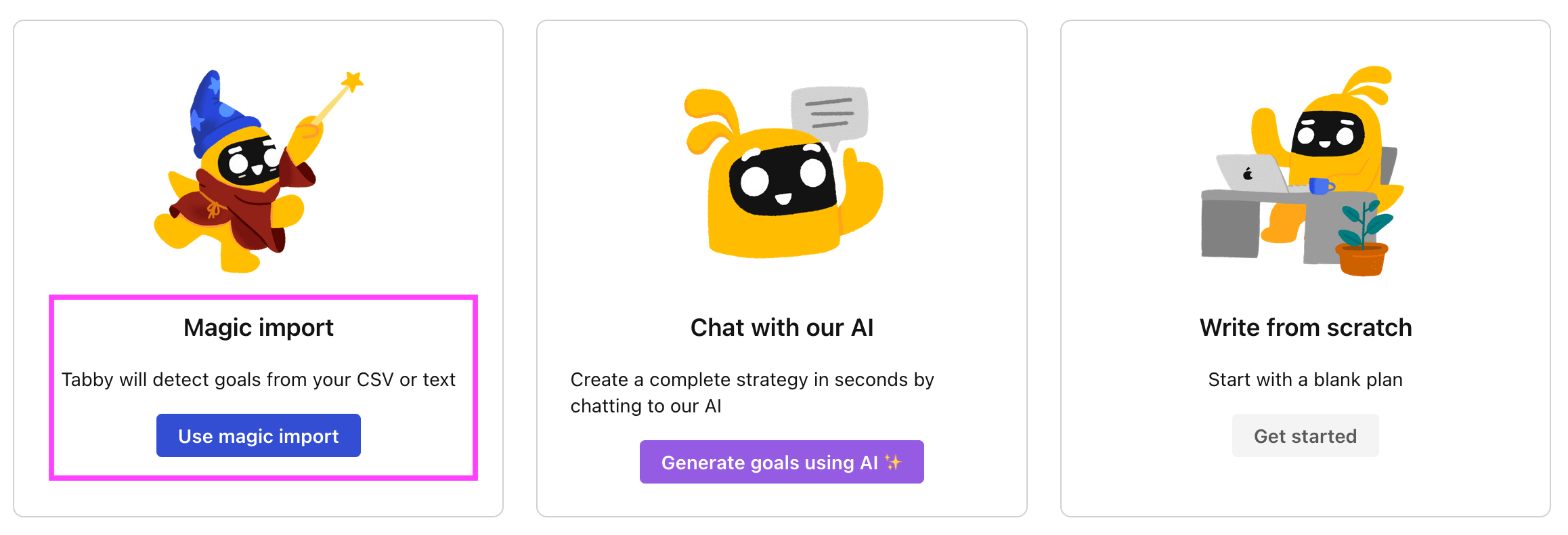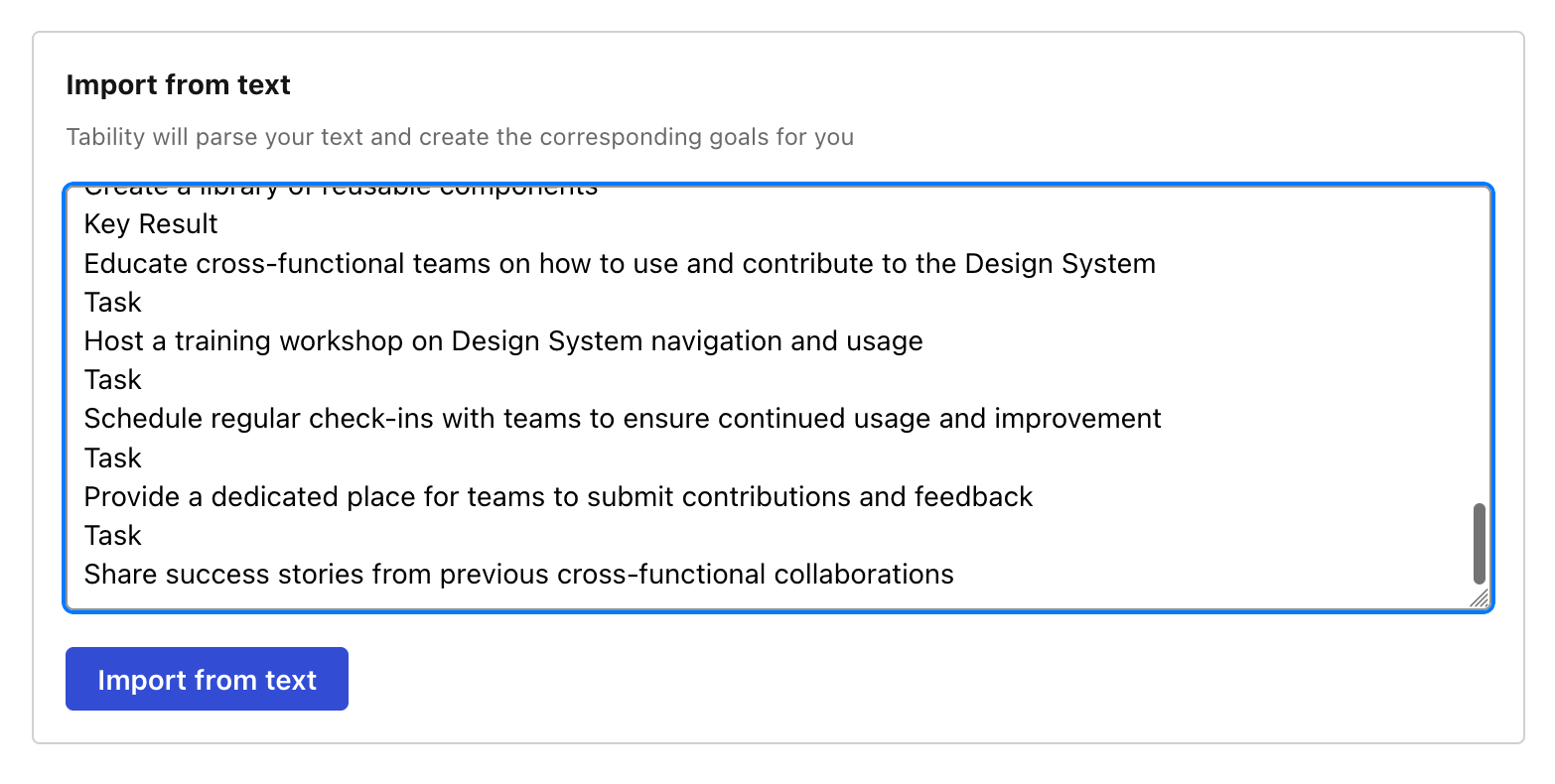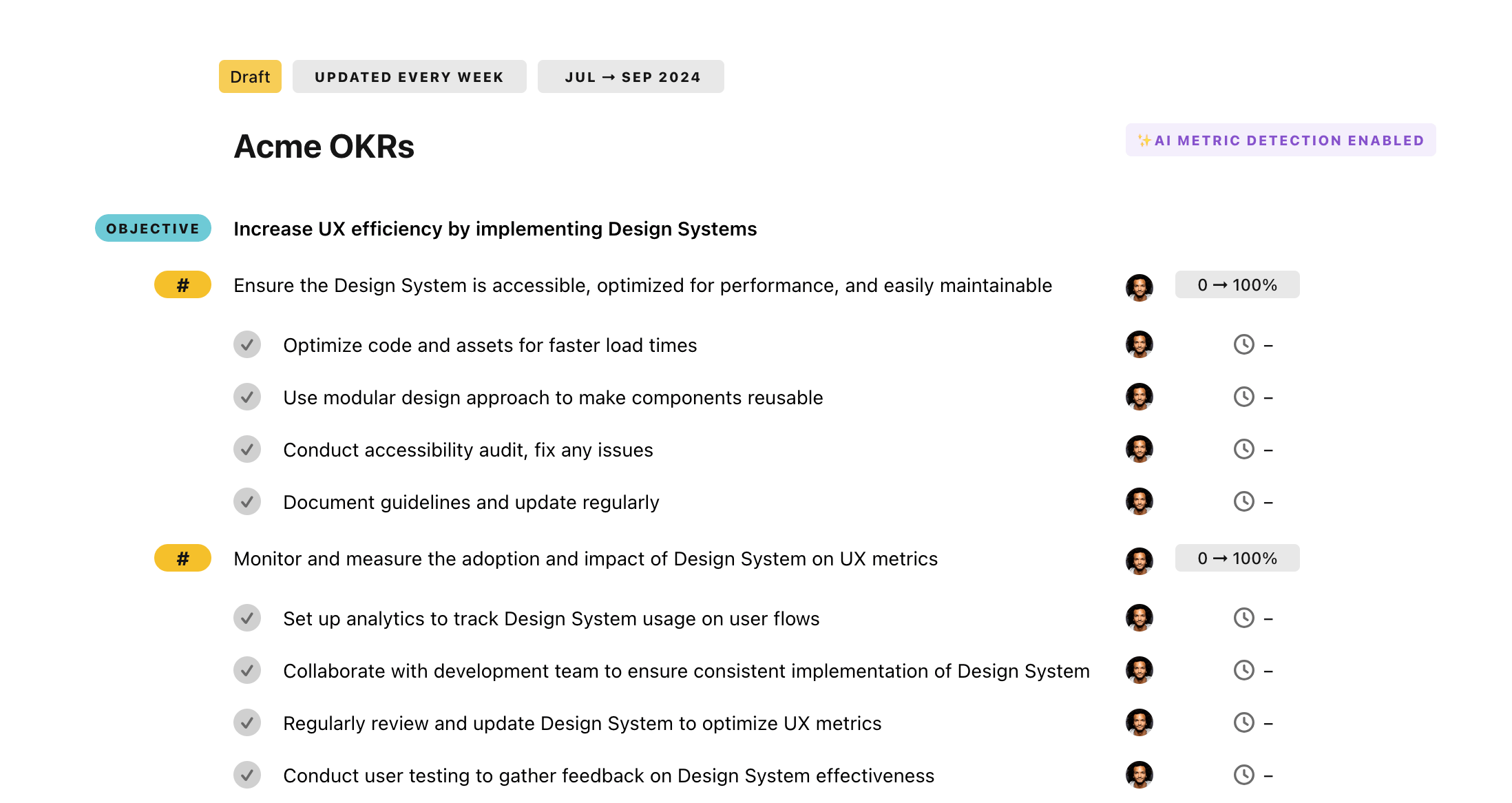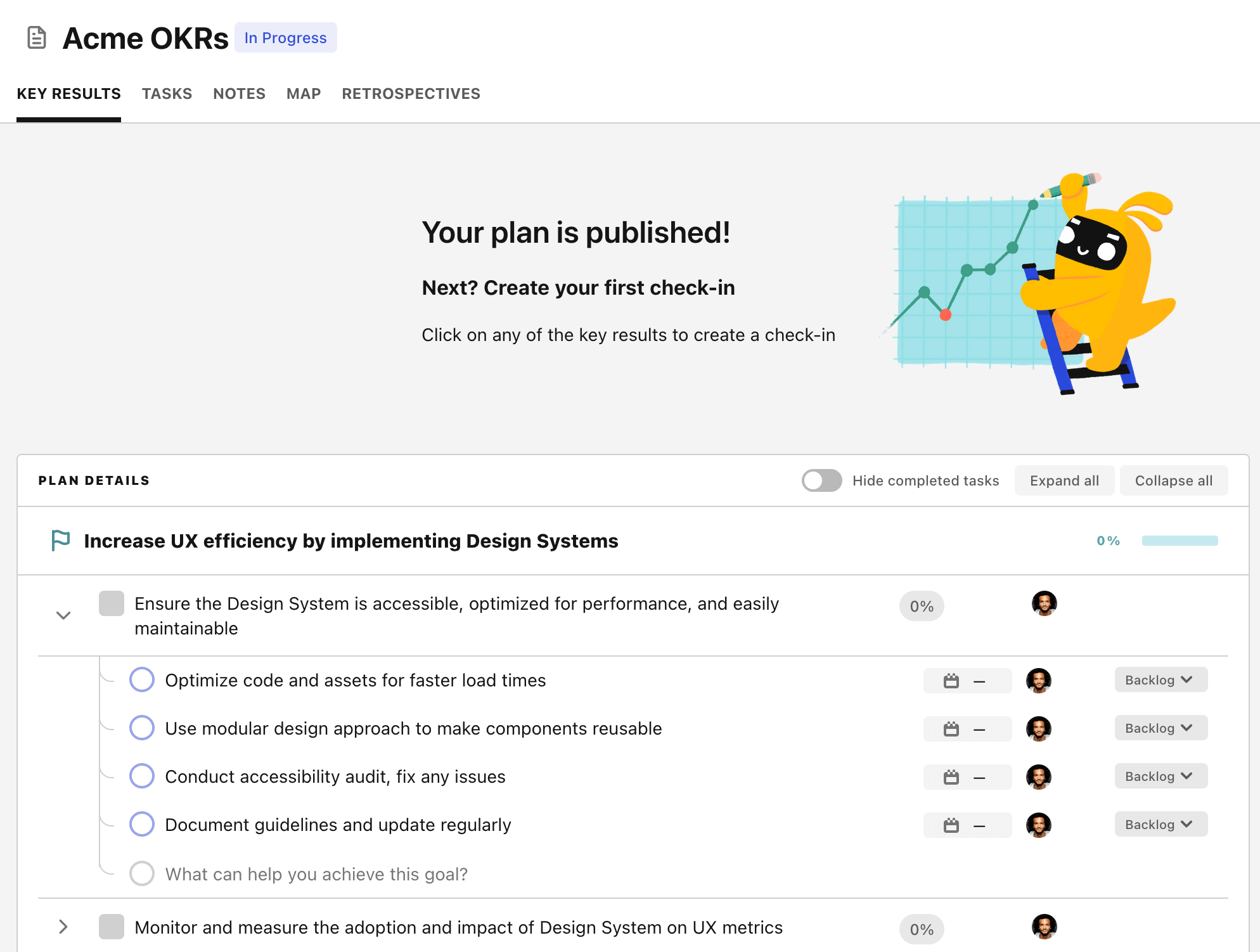OKR template to increase employee retention rate
Your OKR template
The OKR also focuses on creating a robust feedback system to address 90% of employee concerns, thereby increasing job satisfaction. It suggests ensuring consistent updates on feedback to maintain employee satisfaction, developing a transparent and uncomplicated feedback system, and conducting surveys to identify employee needs and suggest improvements.
The OKR highlights an important outcome of decreasing employee turnover by 15% through improved engagement programs. As initiatives to realize this objective, it proposes introducing a program to recognize and reward staff, implementing weekly team-building activities to enhance communication, and developing additional opportunities for career advancement and training.
This OKR insights into the significance of employee satisfaction, improved training programs and engagement initiatives to API increase the retention rate. In essence, it articulates the importance of valuing employees, their development and their feedback to ensure a reduced turnover rate and high retention.
ObjectiveIncrease employee retention rate
KREnhance training programs to increase skills development satisfaction by 25%
Implement regular feedback sessions post-training for continuous adjustment
Survey employees to identify gaps in current training programs
Develop advanced, interactive training modules for skill enhancement
KRImplement a feedback system to address 90% employee concerns and improve satisfaction
Regularly update and address feedbacks to ensure employee satisfaction
Develop a transparent, easy-to-use feedback system
Survey employees to identify concerns and suggestions for improvement
KRReduce employee turnover by 15% through improved engagement programs
Introduce an employee recognition and rewards program
Implement weekly team-building activities to foster communication
Develop opportunities for career advancement and training
How to edit and track OKRs with Tability
You'll probably want to edit the examples in this post, and Tability is the perfect tool for it.
Tability is an AI-powered platform that helps teams set better goals, monitor execution, and get help to achieve their objectives faster.
With Tability you can:
- Use AI to draft a complete set of OKRs in seconds
- Connect your OKRs and team goals to your project
- Automate reporting with integrations and built-in dashboard
Instead of having to copy the content of the OKR examples in a doc or spreadsheet, you can use Tability’s magic importer to start using any of the examples in this page.
The import process can be done in seconds, allowing you to edit OKRs directly in a platform that knows how to manage and track goals.
Step 1. Sign up for a free Tability account
Go tohttps://tability.app/signup and create your account (it's free!)
Step 2. Create a plan
Follow the steps after your onboarding to create your first plan, you should get to a page that looks like the picture below.

Step 3. Use the magic importer
Click on Use magic import to open up the Magic Import modal.
Now, go back to the OKR examples, and click on Copy on the example that you’d like to use.

Paste the content in the text import section. Don’t worry about the formatting, Tability’s AI will be able to parse it!

Now, just click on Import from text and let the magic happen.

Once your example is in the plan editor, you will be able to:
- Edit the objectives, key results, and tasks
- Click on the target 0 → 100% to set better target
- Use the tips and the AI to refine your goals
Step 4. Publish your plan
Once you’re done editing, you can publish your plan to switch to the goal-tracking mode.

From there you will have access to all the features that will help you and your team save hours with OKR reporting.
- 10+ built-in dashboards to visualise progress on your goals
- Weekly reminders, data connectors, and smart notifications
- 9 views to map OKRs to strategic projects
- Strategy map to align teams at scale